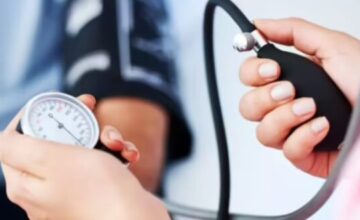
Hypertension aka high blood pressure stands under the list of paramount issues that is affecting a large population globally and the number continues to escalate.
Elevated blood pressure is a threatening disease and is further associated with various health concerns like heart diseases, kidney diseases, obesity and stroke.
Various lifestyle factors like diet contribute majorly to controlling hypertension and health enthusiasts have already put plenty of dietary interventions into the limelight to combat hypertension.
While the internet is flooded with plenty of strategies to decrease high blood pressure, the DASH diet is backed up by doctors and nutritionists and is proven to give effective results in controlling hypertension.
But if you wonder how this diet works, then you have stumbled upon the right page! Read on to know everything about the subject.
DASH diet: What exactly it is?
The principles DASH diet follows:
-
Consume 5 servings of natural and seasonal fruits and vegetables regularly.
-
Cut down on fat-enriched dairy foods and packaged eatables as such foods are packed with saturated fats.
-
Do inculcate more nourishing whole grains, chicken, fish and nuts in your diet.
-
Restrict salty foods, added sugary food items or beverages, or red meat
High salt consumption is one of the major factors that contribute to hypertension. The standard DASH diet programme holds back the high salt consumption and restricts it to 2300 milligrams in a day which counts as 1 teaspoon. The diet can further decrease the consumption of salt to (1,500 mg) which further counts as ¾ teaspoon if the person is suffering from extremely high levels of hypertension.
Diet tips to consider while following a Dash diet
-
Try to consume vegetables in the form of salad with lunch and dinner.
-
Consume your meals with fruits or incorporate a serving of the same in your snack time. Say no to canned and dried fruits as they contain added sugar and only harm the health rather than do any good.
-
Divide the regular serving of ghee, butter or any type of store-bought condiments you use with your meal. Sip on low-fat or double skimmed dairy products or you can also swap dairy milk for the nut milk (check with a health professional).
-
Try to consume plant-based meals as much as you can and limit the consumption of non-vegetarian meals twice a week.
-
Try to consume at least 2 servings of beans a day.
-
Go through the food labels thoroughly to choose low sodium products cutting back on the salt is the major aim of the DASH Diet. Consult a health expert to decide what quantities of salt you need to consume in a day.
DASH diet can be beneficial for those suffering from hypertension if followed rigorously. Not only does it decrease high blood pressure but it also aids in cultivating healthy eating practices. Do consult a health professional before following any type of diet with high blood pressure levels.




